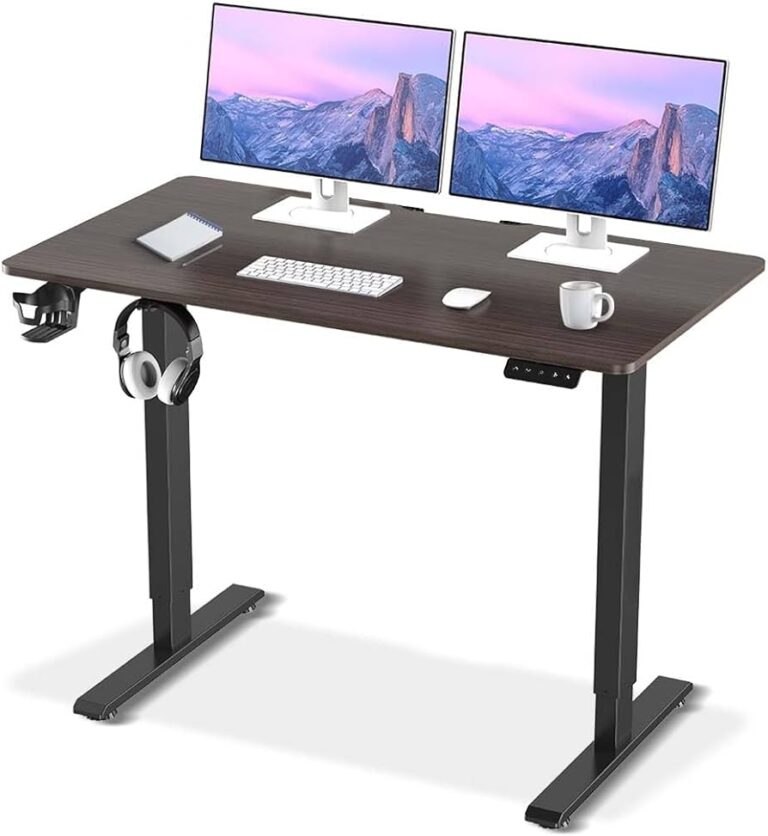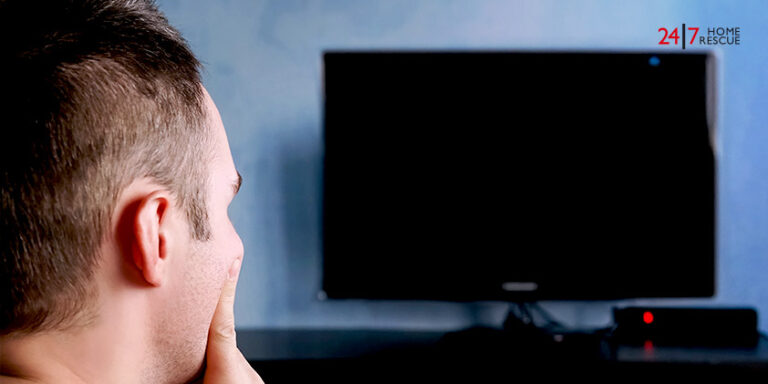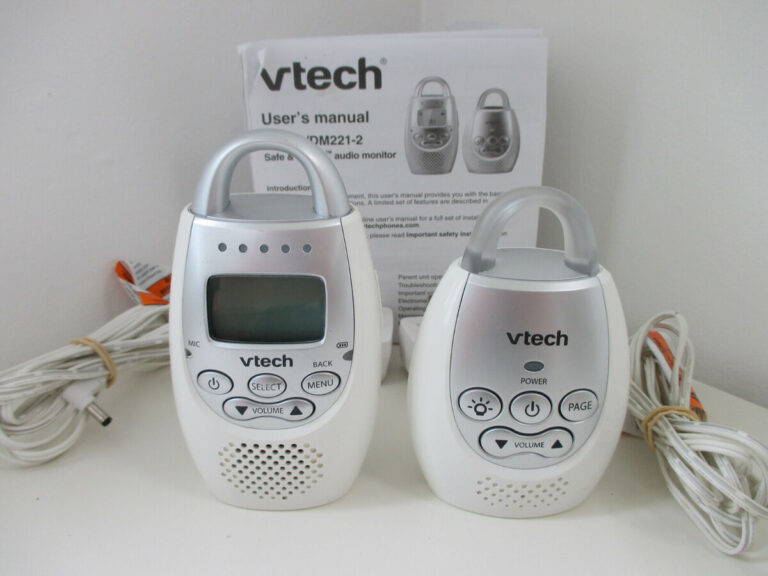Why Monitor Not Detected? Troubleshooting Tips and Solutions
If your monitor is not being detected, check if it is powered on and refresh the connection. You can also open the monitor’s controls and select the correct input port, as well as check the signal cable connection between the display and graphics card.
If the issue persists, you can force Windows to detect the monitor by checking all connections and rebooting the PC. Additionally, ensure that the monitor is enabled in the Nvidia panel and try basic hardware troubleshooting if the external monitor does not display as expected.
You can also select “Detect” under the “Multiple displays” option in the Windows display settings. Check for any issues with the power cord or try using a different cable or outlet. If these steps do not resolve the problem, the monitor may be broken and require replacement.
Why Monitor Not Detected?
If your monitor is not being detected, there are several troubleshooting steps you can take. Check if the monitor is powered on, refresh the connection by turning the computer off and on, and ensure the correct input port is selected.
Additionally, check the signal cable connection between the display and the graphics card.
Common Scenarios Leading To Detection Issues
There could be several common scenarios that may lead to your monitor not being detected by your computer. It’s important to understand these scenarios to effectively troubleshoot and resolve the issue. Here are some common scenarios: 1. Power issues: Check whether the monitor is powered on. Sometimes, a simple power cycle can help refresh the connection between the monitor and the computer. Turn off the computer and then turn it back on to see if the monitor is detected. 2. Input port selection: Open the monitor’s built-in controls and ensure that the correct input port is selected. This is especially important if you have multiple input options on your monitor, such as HDMI, VGA, or DisplayPort. 3. Signal cable connection: Check the connection between the monitor and the graphics card on your computer. Ensure that the signal cable is securely plugged into both the monitor and the graphics card. A loose or faulty connection can prevent the monitor from being detected.Initial Checks For Prompt Resolution
Performing some initial checks can help identify and resolve the issue of your monitor not being detected. Here are a few checks you can carry out for prompt resolution: 1. Check your cables and ports: Start by ensuring that all cables are properly connected. Make sure the monitor cable is securely plugged into both the monitor and the computer. If you are using an adapter or a docking station, check those connections as well. 2. Force detect displays: In some cases, Windows may not automatically detect a secondary monitor. You can manually force Windows to detect the monitor by following these steps: – Right-click on the desktop and select “Display settings.” – Scroll down and click on the “Detect” button under the “Multiple displays” section. 3. Check device manager: Open the device manager by right-clicking on the start button and selecting “Device Manager.” Look for any hidden devices related to your monitor. If you find any, right-click on them and select “Uninstall device.” Then, restart your computer and check if the monitor is detected. Remember, these are just a few initial checks that you can perform. The resolution of the issue may vary depending on your specific setup. If these checks do not resolve the problem, further troubleshooting may be required. By following these initial checks and understanding the common scenarios leading to detection issues, you can increase the chances of resolving the ‘Why Monitor Not Detected?’ problem efficiently.
Credit: www.betterup.com
Troubleshooting Tips And Solutions
Having trouble with your monitor not being detected by your PC? Don’t worry, we’ve got you covered. In this section, we will provide you with step-by-step troubleshooting tips and solutions to help you identify and solve the problem.
Step-by-step Guide To Identify And Solve Problems
If your monitor is not being detected, here are some steps you can follow to identify and resolve the issue:
- Check whether the monitor is powered on: Ensure that your monitor is powered on and receiving power. If not, check the power cable and make sure it is securely connected to a power source.
- Turn the computer off and on to refresh the connection: Sometimes, a simple reboot can help resolve connectivity issues. Turn off your computer and then turn it back on to refresh the connection between the monitor and the PC.
- Open the monitor’s built-in controls and choose the correct input port: Many monitors have built-in controls that allow you to select the input port. Make sure you have selected the correct input port that corresponds to the connection between your monitor and PC (e.g., HDMI, DisplayPort, VGA).
- Check the signal cable connection between the display and the graphics card: Ensure that the signal cable (e.g., HDMI cable, DisplayPort cable) is securely connected to both the monitor and the graphics card of your PC. Disconnect and reconnect the cable to ensure a proper connection.
By following these step-by-step troubleshooting tips, you can effectively identify and solve problems related to your monitor not being detected by your PC.
How To Interpret Error Messages
If you encounter any error messages related to your monitor not being detected, it is important to understand their meaning in order to find a suitable solution. Here are some common error messages and their possible interpretations:
| Error Message | Possible Interpretation |
|---|---|
| No Signal Detected | This message indicates that the monitor is not receiving a signal from the PC. Check the signal cable connection and make sure it is properly connected. |
| Display Not Detected | This message suggests that the PC is unable to detect the connected monitor. Verify the cable connection and try reconnecting it. |
| Out of Range | This error message typically occurs when the display settings of your PC are incompatible with the monitor. Adjust the resolution and refresh rate settings to match the capabilities of the monitor. |
By understanding the meaning behind these error messages, you can troubleshoot the issue more effectively and find the appropriate solution.
Remember, troubleshooting your monitor not being detected requires careful attention to detail and patience. Follow the step-by-step guide and interpret error messages correctly to successfully solve the problem and get your monitor up and running again.
Connectivity And Power Checks
When it comes to troubleshooting a monitor that is not being detected by your computer, one of the key areas to focus on is connectivity and power. Ensuring that the cables are properly connected and the power supply is functioning correctly are essential steps in resolving this issue. Here are some steps you can take to ensure proper cable management and verify power supply integrity:
Ensuring Proper Cable Management
Proper cable management is crucial for an uninterrupted and reliable connection between your computer and monitor. Here are some steps to follow:
- Check the signal cable connection: Start by inspecting the cable that connects your monitor to the graphics card. Ensure that the cable is securely plugged into both the monitor and the computer’s graphics card port.
- Replace the cable if necessary: If you notice any signs of damage or wear on the cable, it is recommended to replace it with a new one. Faulty cables can often cause connectivity issues.
- Use the correct input port: Some monitors have multiple input ports, such as HDMI, VGA, or DisplayPort. Ensure that you have selected the correct input port on the monitor’s built-in controls. This can usually be accessed through the monitor’s menu or buttons.
- Check for misplaced connections: Sometimes, cables may become loose or accidentally disconnected. Double-check all connections to ensure they are secure.
Verifying Power Supply Integrity
The power supply to your monitor plays a crucial role in its operation. Here are some steps to verify the integrity of the power supply:
- Check the power source: Ensure that your monitor is properly connected to a working power outlet. If possible, try plugging it into a different outlet to rule out any issues with the power source.
- Inspect the power cable: Examine the power cable for any signs of damage or fraying. If you notice any issues, replace the power cable with a new one.
- Power cycle your monitor: Turn off your monitor and unplug it from the power source. Wait for a few minutes, then reconnect and power it on. This can sometimes resolve power-related issues.
- Test with a different power supply: If available, try using a different power supply to see if the issue persists. This can help determine if the problem lies with the monitor’s power supply.
By following these steps, you can ensure that the connectivity between your monitor and computer is optimal and that the power supply is working correctly. These checks can often resolve the issue of a monitor not being detected by your computer, allowing you to resume your work or entertainment without interruption.
Configuration And Settings
If your monitor is not being detected by your PC, there are a few things you can try. First, make sure the monitor is powered on and the connections between the display and graphics card are secure. You can also force Windows to detect the monitor or check for misplaced connections.
Configuration And Settings: Adjusting Display Settings For Recognition
In order to troubleshoot the issue of your monitor not being detected by your computer, it is essential to check and adjust the display settings. By following the steps mentioned below, you can ensure that your monitor is recognized and connected properly:
- First, make sure that your monitor is powered on. It may seem like a simple step, but sometimes a monitor is not properly turned on, resulting in the connection issue.
- Next, reboot your computer to refresh the connection between the monitor and the system. This can help resolve any temporary glitches or conflicts that might be causing the detection problem.
- Access the built-in controls on your monitor. Different monitors have different control options, but typically, there are buttons or a menu that allow you to navigate through settings. Use these controls to select the correct input port for your monitor. Sometimes, the monitor might be set to the wrong input, leading to the detection issue.
- Check the signal cable connection between the display and the graphics card. Ensure that the cable is securely plugged into both the monitor and the computer’s graphics card port. A loose or faulty connection can impede detection.
By following these steps and adjusting your display settings accordingly, you can increase the chances of your monitor being recognized by your computer system.
Configuration And Settings: Updating And Managing Drivers Effectively
Another crucial aspect to consider when troubleshooting a monitor detection issue is the status of your drivers. Outdated or faulty drivers can prevent your computer from identifying and connecting with your monitor. To ensure that your drivers are up to date and properly managed, you can follow the steps below:
- Check the manufacturer’s website for the latest driver updates for your graphics card or monitor. Download and install the updated drivers specific to your model and operating system.
- Alternatively, you can use the Device Manager in Windows to update your drivers. Simply right-click on the Start button, select Device Manager, and expand the Display Adapters or Monitors section. Right-click on the listed device and choose “Update driver.” Follow the on-screen instructions to complete the update process.
- Regularly check for driver updates and install them promptly to ensure optimal performance and compatibility between your monitor and computer.
By effectively managing and updating your drivers, you can enhance the compatibility and functionality of your monitor, increasing the chances of it being detected by your computer system.
Advanced Solutions
If your monitor is not being detected, there are a few steps you can try to fix the issue. First, check if the monitor is powered on and connected properly. Restart your computer to refresh the connection and make sure the correct input port is selected.
Also, check the signal cable connection between the monitor and graphics card. By following these troubleshooting steps, you can resolve the monitor detection problem.
Deeper Dive Into Hardware And Software Fixes
When facing the issue of a monitor not being detected, it’s important to explore advanced hardware and software solutions to resolve the problem. By delving deeper into these fixes, you can ensure that you’re taking the necessary steps to get your monitor back up and running.
When To Seek Professional Assistance
If your attempts at troubleshooting and applying advanced fixes have not been successful, it may be time to seek professional assistance. The expertise of a professional can help diagnose and resolve the underlying issues causing the monitor detection problem. Don’t hesitate to reach out for help to ensure a timely and accurate solution.
Frequently Asked Questions On Why Monitor Not Detected
Why Is My Monitor Not Being Detected?
To fix monitor not being detected issues, follow these steps: 1. Check if the monitor is powered on. 2. Turn off and on the computer to refresh the connection. 3. Open the monitor’s controls and select the correct input port. 4.
Ensure a proper signal cable connection between the monitor and graphics card. If the problem persists, try: – Forcing Windows to detect the monitor. – Checking all cable and port connections. – Checking for hidden devices in the device manager. – Verifying enabled monitors in the Nvidia panel.
– Conducting basic hardware troubleshooting. If all else fails, consider replacing the monitor.
How Do I Make My Monitor Detect?
To make your monitor detect, follow these steps: 1. Check if the monitor is powered on. 2. Turn off and on your computer to refresh the connection. 3. Open the monitor’s built-in controls and select the correct input port. 4. Verify the signal cable connection between the display and graphics card.
5. If the issue persists, force Windows to detect the monitor or check for misplaced connections.
Why Does My Monitor Display No Signal Detected?
If your monitor displays no signal detected, check if it is powered on and connected properly. Restart your computer to refresh the connection. Use the monitor’s controls to select the correct input port. Also, check the signal cable connection between the display and the graphics card.
Why Is There Suddenly No Display On My Monitor?
If there is suddenly no display on your monitor, check if it’s powered on and the connection between the display and graphics card is secure. Refresh the connection by turning the computer off and on. Make sure you’ve selected the correct input port and check the cables and ports.
Conclusion
In troubleshooting a monitor not being detected, there are several steps you can take. First, check if the monitor is powered on and refresh the connection by turning the computer off and on. Additionally, go into the monitor’s built-in controls and choose the correct input port.
Ensure the signal cable connection between the display and the graphics card is secure. If none of these steps work, you can force Windows to detect the monitor and check all connections. By following these steps, you can resolve the issue and get your monitor working again.



